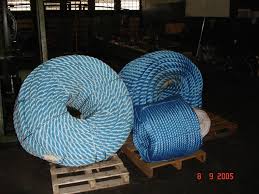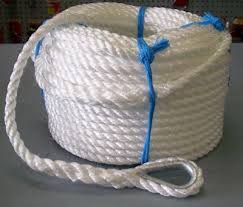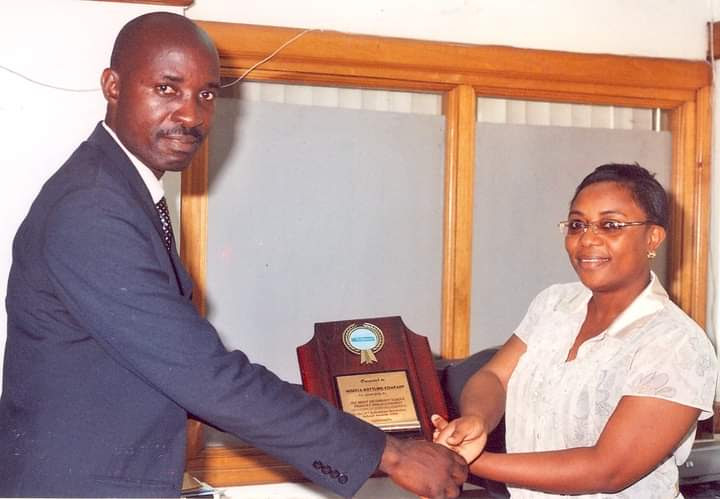![]()
If you’ve landed on this article page, you’re probably searching for a
good business idea—an idea that’s light on the pocket but heavy on
returns, promising both a fulfilling journey and potential profit.
|
How to start Ropes and Twines
production Business in Nigeria
In ancient times, ropes were made by twisting natural fibres
obtained from plants like hemp, sisal, or jute. The fibres were
dried and cleaned, then twisted together by hand to form long
strands. Although not as advanced as modern rope-making
techniques, the core methods of making rope haven’t changed
significantly since ancient times. Strong, flexible ropes have
long been a staple of human life, and they’re not going anywhere
anytime soon.
What natural material is rope made of?
Natural ropes are commonly made from natural fibres such as
cotton, jute, hemp, sisal and manila. These fibres can be
combined to create mixed fibre natural rope.
Why are ropes twisted?
Ropes are twisted to increase their strength, durability, and
stability. Twisting rope distributes the load across multiple
fibres, making the rope stronger and more resistant to breaking
or stretching. Ropes aren’t always twisted, however, as braided
ropes are another common form of rope that’s incredibly flexible
and strong.
What is the strongest rope made of?
Although all types of rope are very strong for general use,
those looking for heavy-duty applications should opt for
synthetic rope. Specifically, polyethylene rope has been praised
as the strongest rope, with an incredibly high breaking
strength.
There are a few ways to seal the end of a rope to prevent
fraying or unravelling. When working with synthetic rope, a hot
knife rope cutter melts the end of the rope, keeping each braid
or twist nice and tight. For natural ropes, techniques like
whipping and splicing use tape or even metal to secure the ends
of the rope. The way you secure your rope will depend on its
material and intended usage.
Before we dive into the process of how rope is made, we need to
understand what types of rope are available. To make it simple,
we’ve covered the two main types of ropes; natural and
synthetic. Of course, there are many different types of both
natural and synthetic ropes, however, the way that they are made
will largely differ due to their basic material, i.e., natural
or synthetic.
1. Natural rope
Natural rope is made from natural plant fibres sourced from
plants. This type of rope is the most traditional and will be
closest to the very first instances of rope making thousands of
years ago. These ropes have a rustic feel to them, making them
popular for DIY projects and crafting due to their traditional
finish. Plus, natural ropes are strong, flexible and durable.
Some examples of natural rope are: Manila rope, Sisal rope,
Cotton rope, Twisted jute rope
2. Synthetic rope
Synthetic rope is made by braiding together synthetic materials,
producing a stronger, more durable alternative to natural ropes.
They’re often used around ships and water, for example, to moor
a boat, or for lifting and securing heavy loads. Synthetic rope
can even be made to look like natural rope, which is often the
case with decking ropes. Some examples of synthetic ropes are:
Polyethylene ropes, Marine and yacht ropes, Certain decorative
braids, Polypropylene ropes
How is rope made? The full rope-making process
1.
Processing the fibres
For natural ropes, the raw natural fibres are lubricated with
natural oil before passing through a series of machines. These
machines remove dirt and straighten the fibres, passing them
through a series of steel-toothed combs. This forms what’s
called a sliver – multiple fibres are aligned to create a
cohesive sort of ribbon.
A similar process is followed for synthetic ropes, with the
synthetic fibres grouped together by machines. Synthetic fibres
are easier to work with since they tend to align more easily
than natural fibres.
2. Forming yarn
After the first step is complete, we are left with slivers of
synthetic or natural fibres. These slivers are twisted together
to form yarn, which is then wound onto a spool or bobbin.
3. Dyeing
Once the yarn has been collected, there is the option to dye it
different colours. This process is done before the rope is
formed, as it allows the opportunity to have multiple strand
colours in a rope. Marine safety ropes often use this technique,
mimicking the colourways of a life jacket in order to keep
people safe on and around the water.
4. Forming the rope
With the yarn ready for use, it’s time to form the ropes. There
are two main types of rope in terms of how each strand of yarn
is interlocked with the others.
Twisted rope: To make twisted rope, the bobbins are placed onto
a frame called a creel inside a rope-making machine. Twisted
rope is commonly formed of three strands of yarn, however, there
are twisted ropes that consist of four or more strands. The
strands of yarn are fed into the machine, where they’re
compressed and twisted.
When making the rope, yarn strands are twisted in the opposite
direction to how the yarn itself was formed. For example, if
strands of yarn were made from slivers that were twisted to the
left (S twist), then the yarn will be twisted to the right (Z
twist) when forming the rope. This is to ensure that the rope is
incredibly strong and sturdy.
Braided rope: Braided ropes tend to be made from synthetic
materials, such as this pre-spliced dock line, in order to
create a very strong and stretchy rope. A braided rope requires
many more strands of yarn than a twisted rope – normally around
9-18 strands. The bobbins are placed in a braiding machine which
weaves the yarn into an incredibly tight braid.
5. Finishing touches
Once the rope has been formed, it will go through other
processes to create the final product. The ends of each rope
will be sealed – natural ropes are taped and synthetic ropes are
melted. This is to stop the rope from fraying and ensure it
stays strong throughout its intended use. Protective coatings
may also be applied, depending on the type of rope.
6. Quality control
Get our Practical Guide on Rope Production Business in Nigeria.
During this Training, we will delve into the fascinating process
of rope manufacturing, exploring the materials used, the
different types of ropes, and the step-by-step production
methods.
|







